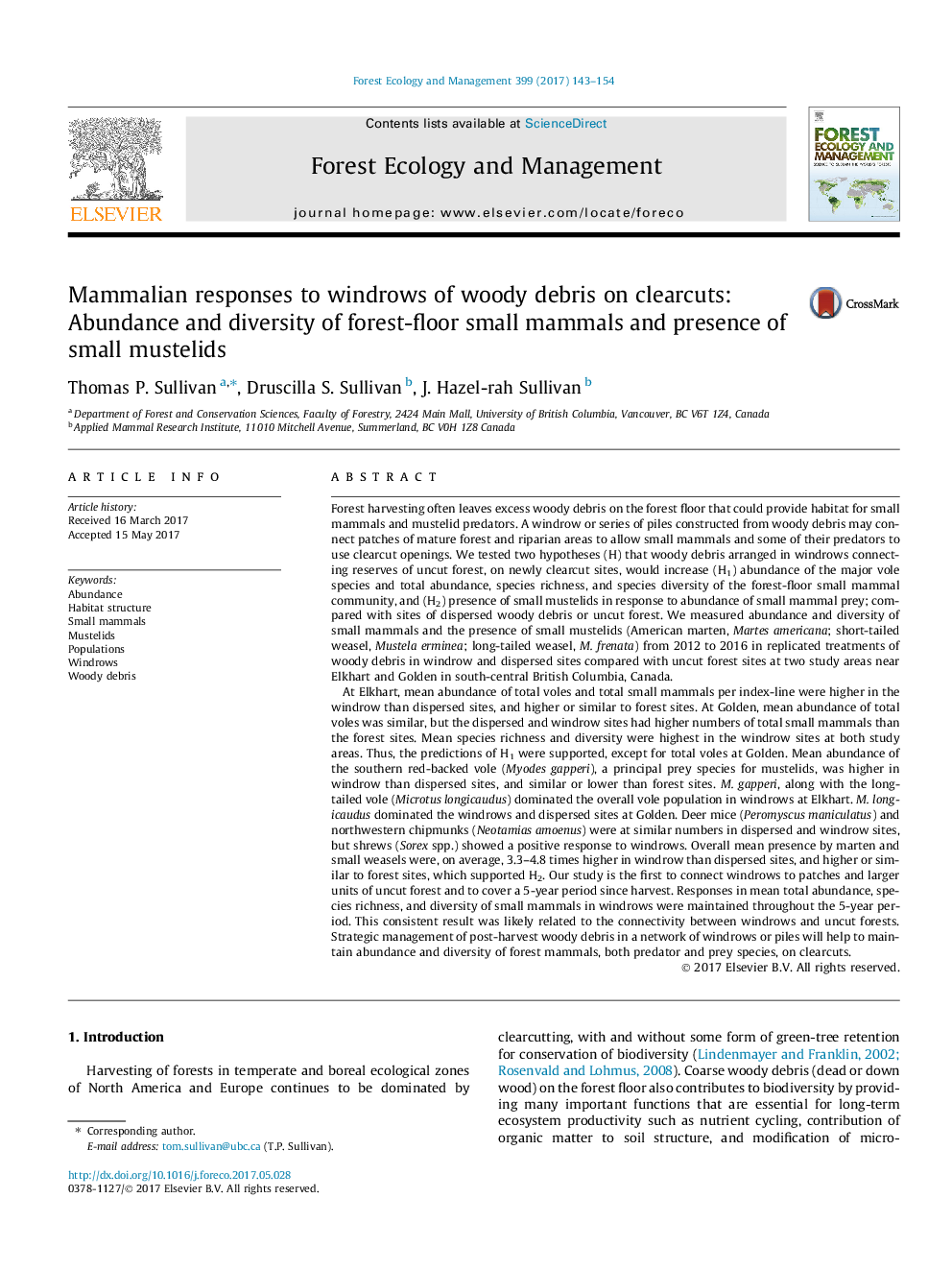| کد مقاله | کد نشریه | سال انتشار | مقاله انگلیسی | نسخه تمام متن |
|---|---|---|---|---|
| 4759375 | 1421359 | 2017 | 12 صفحه PDF | دانلود رایگان |
عنوان انگلیسی مقاله ISI
Mammalian responses to windrows of woody debris on clearcuts: Abundance and diversity of forest-floor small mammals and presence of small mustelids
ترجمه فارسی عنوان
پاسخ های پستانداران به زوایای چوب های بریده بریده: فراوانی و تنوع پستانداران کوچک جنگل و حضور موزه های کوچک
دانلود مقاله + سفارش ترجمه
دانلود مقاله ISI انگلیسی
رایگان برای ایرانیان
کلمات کلیدی
موضوعات مرتبط
علوم زیستی و بیوفناوری
علوم کشاورزی و بیولوژیک
بوم شناسی، تکامل، رفتار و سامانه شناسی
چکیده انگلیسی
At Elkhart, mean abundance of total voles and total small mammals per index-line were higher in the windrow than dispersed sites, and higher or similar to forest sites. At Golden, mean abundance of total voles was similar, but the dispersed and windrow sites had higher numbers of total small mammals than the forest sites. Mean species richness and diversity were highest in the windrow sites at both study areas. Thus, the predictions of H1 were supported, except for total voles at Golden. Mean abundance of the southern red-backed vole (Myodes gapperi), a principal prey species for mustelids, was higher in windrow than dispersed sites, and similar or lower than forest sites. M. gapperi, along with the long-tailed vole (Microtus longicaudus) dominated the overall vole population in windrows at Elkhart. M. longicaudus dominated the windrows and dispersed sites at Golden. Deer mice (Peromyscus maniculatus) and northwestern chipmunks (Neotamias amoenus) were at similar numbers in dispersed and windrow sites, but shrews (Sorex spp.) showed a positive response to windrows. Overall mean presence by marten and small weasels were, on average, 3.3-4.8 times higher in windrow than dispersed sites, and higher or similar to forest sites, which supported H2. Our study is the first to connect windrows to patches and larger units of uncut forest and to cover a 5-year period since harvest. Responses in mean total abundance, species richness, and diversity of small mammals in windrows were maintained throughout the 5-year period. This consistent result was likely related to the connectivity between windrows and uncut forests. Strategic management of post-harvest woody debris in a network of windrows or piles will help to maintain abundance and diversity of forest mammals, both predator and prey species, on clearcuts.
ناشر
Database: Elsevier - ScienceDirect (ساینس دایرکت)
Journal: Forest Ecology and Management - Volume 399, 1 September 2017, Pages 143-154
Journal: Forest Ecology and Management - Volume 399, 1 September 2017, Pages 143-154
نویسندگان
Thomas P. Sullivan, Druscilla S. Sullivan, J. Hazel-rah Sullivan,
